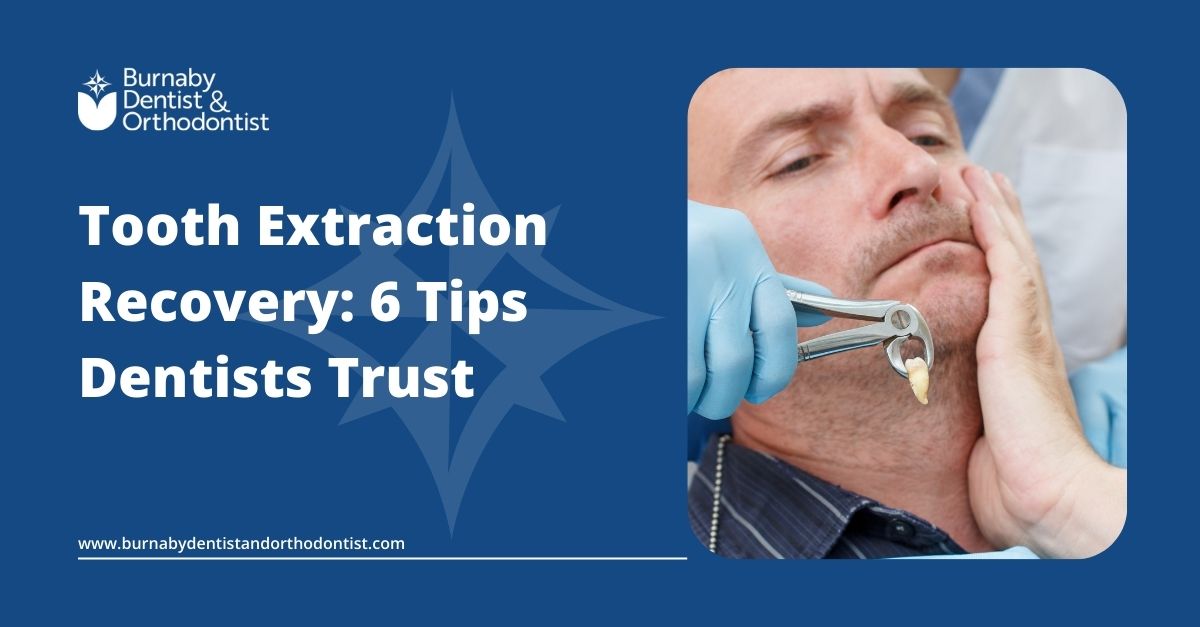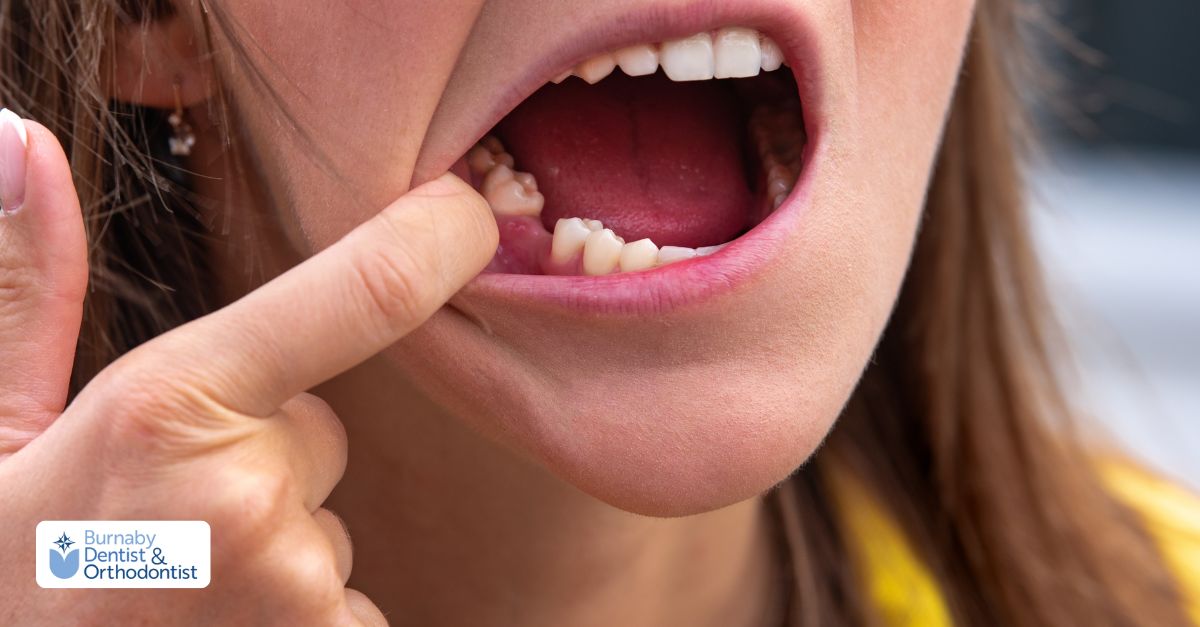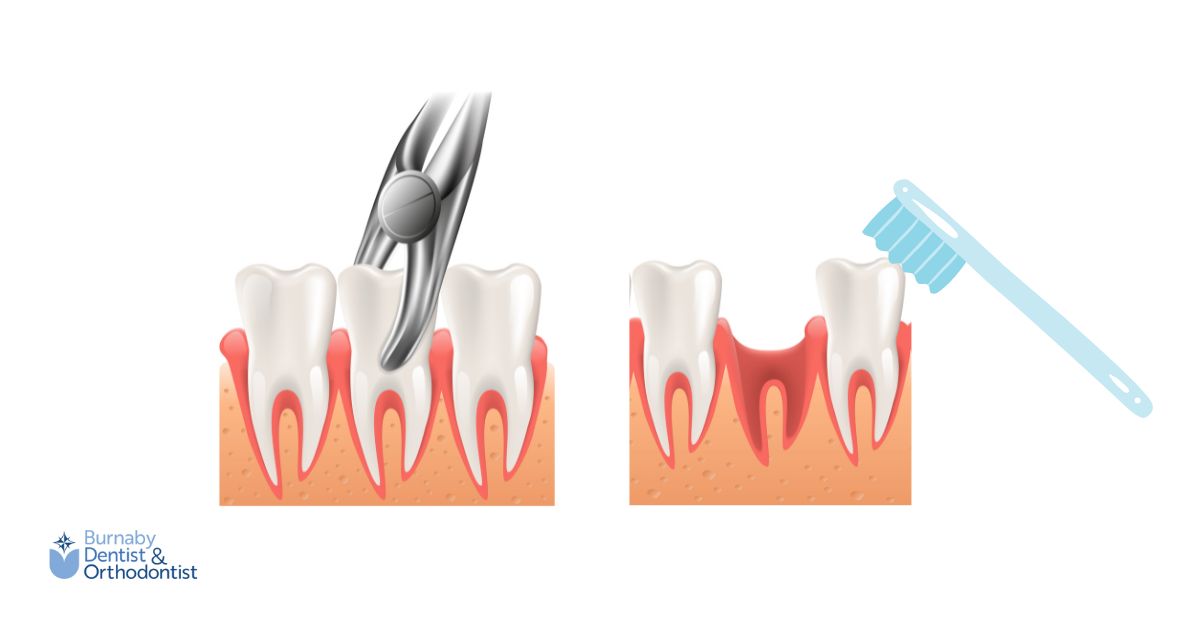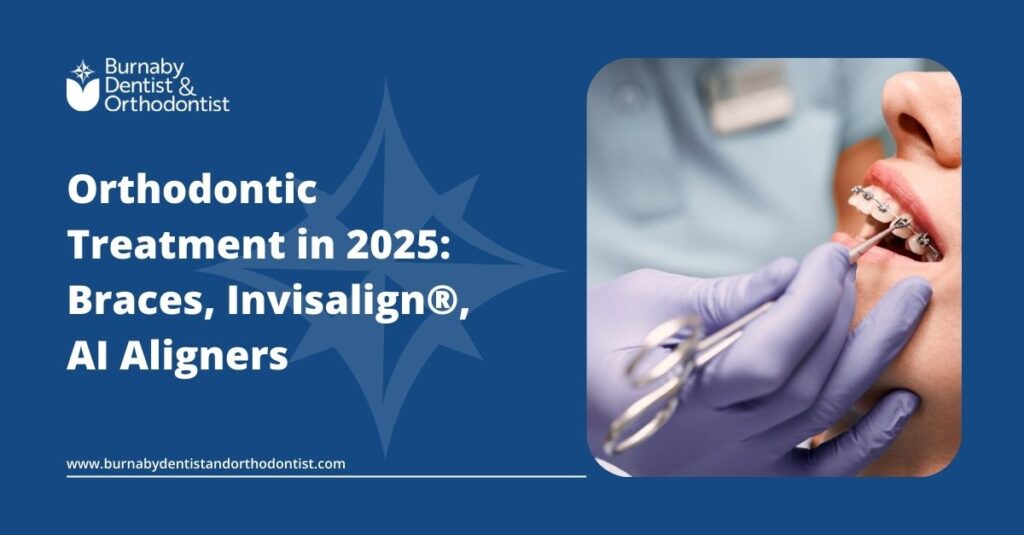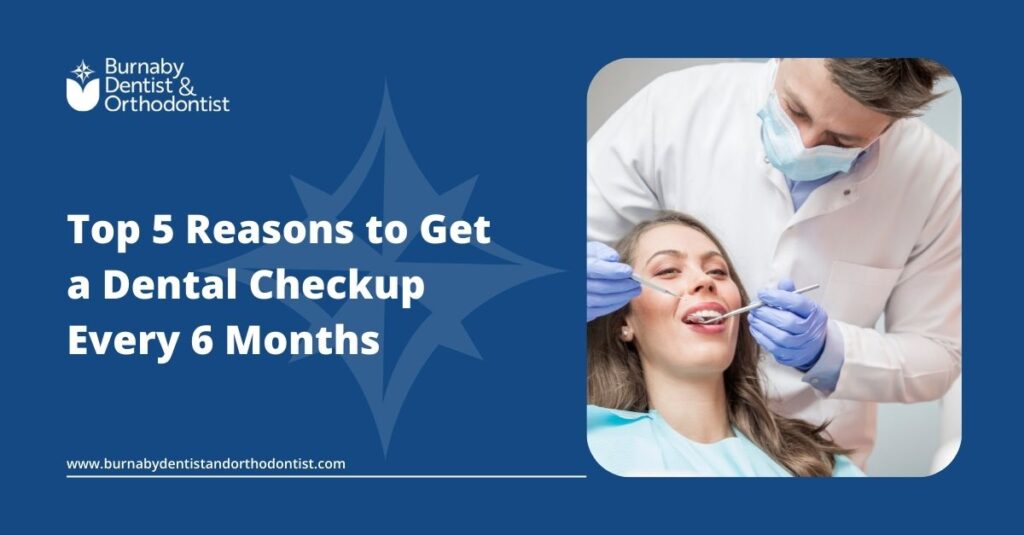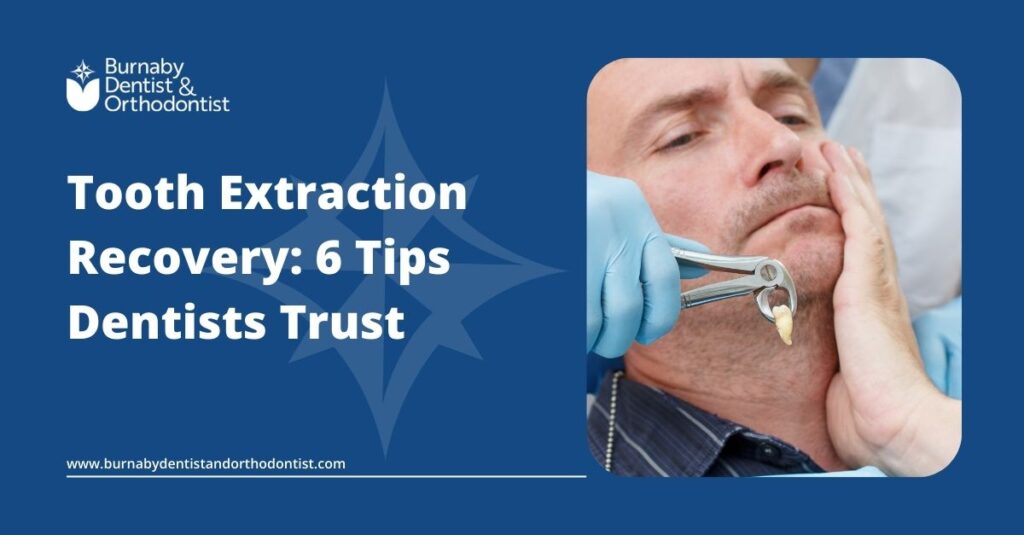Even a simple extraction can leave you with a lot of questions: How do I speed up healing? What should I avoid? When should I call the dentist?
The answers matter. Good recovery isn’t just about rest—it’s about timing and knowing which actions help (and which can cause setbacks).
At Burnaby Dentist and Orthodontist, we guide patients through recovery every day. These practical, evidence-backed tips can help you heal faster and feel better sooner—without adding stress or guesswork.
Why Recovery After a Tooth Extraction Needs Real Guidance?
To dentists, extractions may be routine—but for most patients, recovery is unfamiliar territory. What happens in the hours and days after the procedure often determines how well you heal and how likely you are to avoid complications.
One of the biggest concerns is the blood clot. This clot forms in the socket where your tooth was removed, sealing the site and protecting nerves and bone. If it becomes dislodged too soon, you’re at risk for a painful dry socket or delayed healing.
That’s why our team at Burnaby Dentist and Orthodontist doesn’t just send patients home with a handout—we give clear, personalized instructions for each step of recovery.
You don’t need to overthink it. But you do need to take the right actions at the right time. Here’s how to get it right.
How to Heal Faster After a Tooth Extraction: What Dentists Actually Recommend
Many patients focus on the procedure itself—but it’s what you do afterward that often determines how well you heal.
Whether your extraction was scheduled or the result of a dental emergency, recovery isn’t automatic. The way you rest, eat, clean, and protect the area in the first 48 hours can significantly affect your comfort and healing time.
The good news? You don’t need a complicated routine. Just the right steps at the right time.
At Burnaby Dentist and Orthodontist, we help patients across Burnaby recover safely and confidently. Below are six practical, dentist-approved tips we give every patient after a tooth extraction—each one designed to help you heal faster and avoid unnecessary complications.
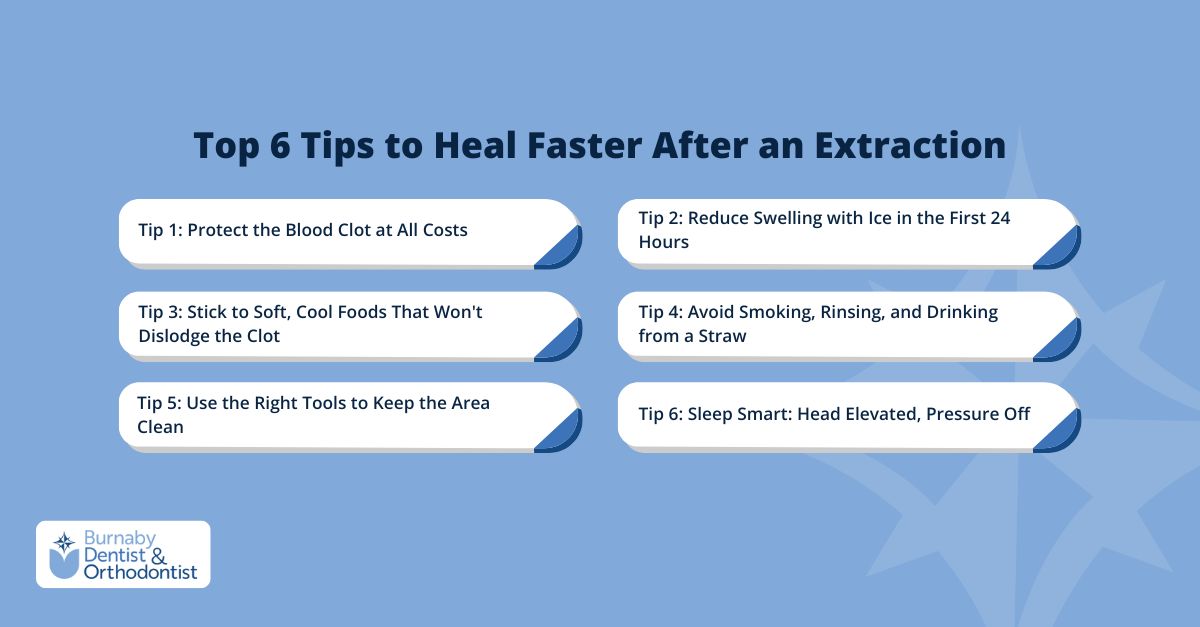
Tip 1: Protect the Blood Clot at All Costs
The blood clot that forms in your socket after extraction is your body’s natural bandage. It seals the site, protects the bone and nerves, and begins the healing process.
If this clot is disturbed too early, it can lead to a dry socket—one of the most painful and avoidable complications we see after extractions.
To protect the clot during the first 24 hours:
✔ Keep pressure on the gauze pad as instructed
✔ Limit talking and chewing
✔ Rest and avoid any unnecessary activity
Think of this early phase as letting your body take the lead. The less disruption, the more effective the healing.
Tip 2: Reduce Swelling with Ice in the First 24 Hours
Swelling is a normal response after a tooth extraction. It doesn’t mean something’s wrong—but it can make recovery more uncomfortable if not managed early.
To help reduce inflammation and keep discomfort in check:
✔ Apply an ice pack to the outside of your cheek for 20 minutes
✔ Then remove it for 20 minutes before reapplying
✔ Continue this on and off cycle for the first few hours after your procedure
Avoid heat, intense physical activity, or lying completely flat, especially during the first day. These can increase swelling and slow down healing.
Managing inflammation early helps you feel more comfortable—and makes the next 48 hours much easier.
Tip 3: Stick to Soft, Cool Foods That Won’t Dislodge the Clot
In the first 24 to 48 hours after an extraction, what you eat matters just as much as what you avoid.
Choose foods that are soft, easy to chew, and served at a cool or room temperature. Options like yoghurt, mashed potatoes, scrambled eggs, and blended soups are gentle on the healing area and help prevent irritation.
Skip anything hot, crunchy, spicy, or sticky—these can aggravate the socket or increase your risk of infection.
Eating carefully for a couple of days supports healing and keeps you more comfortable as the tissue begins to close.
Tip 4: Avoid Smoking, Rinsing, and Drinking from a Straw
Some habits can seriously interfere with healing—especially in the first 24 hours. They create pressure or introduce bacteria, both of which put the blood clot at risk.
Avoid the following:
✘ Smoking or vaping: These slow healing and can lead to dry socket
✘ Straws: The suction can dislodge the clot and expose the bone
✘ Vigorous rinsing or spitting: These create pressure that can disturb the socket
If you smoke, let your dentist know before the procedure. We can help you plan for short-term alternatives to support proper healing.
The goal is to keep the area stable so your body can do what it’s designed to do—recover.
Tip 5: Use the Right Tools to Keep the Area Clean
Keeping the extraction site clean helps prevent infection and supports faster healing—but only if you start at the right time and use the right methods.
Here’s how to clean safely after the first 24 hours:
✔ Rinse gently with salt water 3 to 4 times a day. Use 1 teaspoon of salt in a cup of warm (not hot) water. Let it move passively around your mouth—no swishing, no spitting.
✔ Brush your other teeth as usual, but avoid the extraction site for at least 2–3 days.
✔ Use a soft-bristled toothbrush and avoid any pressure directly over the socket.
Good oral hygiene around the area helps reduce bacteria and inflammation. A clean mouth supports stronger tissue repair and lowers the chance of post-op complications.
Tip 6: Sleep Smart: Head Elevated, Pressure Off
How you sleep in the first couple of nights after an extraction can affect your recovery more than you might expect.
Lying flat increases blood flow to the head, which can worsen swelling and put pressure on the healing site.
To help reduce discomfort:
✔ Sleep with your head elevated using an extra pillow or by resting in a semi-upright position
✔ Avoid sleeping on the side of the extraction, especially in the first 48 hours
✔ Stick to a calm, low-activity evening routine to avoid stimulating bleeding or irritation
These small adjustments can lead to better sleep and a smoother healing process in the first few days.
When Healing Doesn’t Go as Planned: Signs to Watch For
Even if you follow every aftercare step carefully, your body may need extra support. That’s why it’s important to know what’s normal—and what isn’t.
Here are signs you should call your dentist:
⚠️ Pain that worsens after the third day
⚠️ A bad taste or odour coming from the socket
⚠️ Visible bone where the clot should be
⚠️ Swelling that gets worse instead of better
⚠️ Fever or signs of infection
These symptoms may point to a dry socket, delayed healing, or infection. While not common, they do happen—and catching them early makes all the difference.
At Burnaby Dentist and Orthodontist, we’re here for more than just the procedure. If something doesn’t feel right, don’t wait. A quick follow-up can prevent small issues from becoming bigger ones.
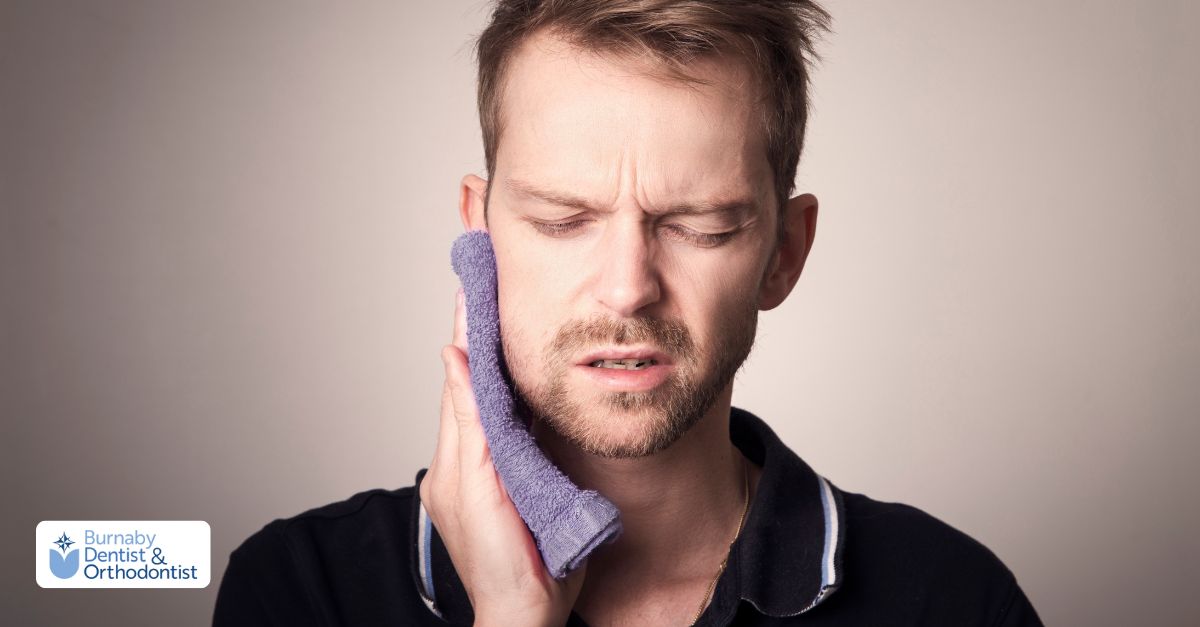
How long does it take to recover from a tooth extraction?
Recovery looks a little different for everyone. Most patients feel significantly better after a few days, but full healing—especially after surgical extractions—can take a few weeks.
Here’s a general breakdown of the healing timeline:
Day 1-2
Expect mild bleeding, swelling, and tenderness. We’ll place dental gauze to help form the clot and recommend rest, ice, and a soft diet. Avoid rinsing, straws, and brushing near the site during this phase.
Day 3-7
The clot stabilizes and tissue begins to rebuild. You can resume gentle brushing (away from the socket) and continue salt water rinses. Most people feel comfortable returning to daily routines.
After Day 7
Soft tissue typically covers the socket, and swelling should be resolved. You can usually return to your regular diet, depending on your comfort level.
Weeks to Months
Bone in the area will continue to heal and reshape. If you’re considering a dental implant or bridge, this is when we assess the best time to begin your tooth replacement plan.
What to Expect from Tooth Extractions at Burnaby Dentist and Orthodontist
Tooth extractions can sound intimidating, but in the right hands, they’re safe, predictable, and more comfortable than most people expect.
At Burnaby Dentist and Orthodontist, we focus on clear communication and supportive care—before, during, and after your procedure.
Here’s what you can expect:
✔ Local anaesthesia or sedation options to keep you comfortable throughout the process
✔ Minimally invasive techniques to protect surrounding bone and tissue
✔ Tailored recovery instructions based on your health history and procedure type
✔ Detailed planning for wisdom tooth removal and other surgical extractions
✔ Follow-up care and tooth replacement guidance when needed
Whether you’re having a simple extraction or oral surgery, our Burnaby dental clinic is here to guide your recovery with clarity and care.
Conclusion
Recovering well after a tooth extraction isn’t about doing more—it’s about knowing what matters and when to act.
From protecting the clot to managing swelling, eating the right foods, and avoiding certain habits, small steps make a big difference in how smoothly you heal.
At Burnaby Dentist and Orthodontist, we provide more than just the procedure. Our team supports your full recovery with clear instructions, follow-up care, and guidance on long-term options like implants or bridges when needed.
If you’re preparing for a dental extraction—or dealing with post-op concerns—we’re here to help. Book a consultation at our Burnaby clinic and take the next step toward safe, comfortable healing.
How can I speed up healing after a tooth extraction?
Rest, avoid suction or rinsing for the first 24 hours, apply ice, eat soft foods, and follow your dentist’s post-op instructions closely.
What should I avoid after getting a tooth removed?
Skip smoking, straws, alcohol, vigorous rinsing, and hard or crunchy foods for at least 2–3 days. These can slow healing or cause a dry socket.
What are the signs of poor healing after extraction?
Worsening pain after day 3, a bad taste, visible bone in the socket, or swelling that doesn’t improve may indicate a complication. Contact your Burnaby dentist if you notice any of these.
What can I eat after a tooth extraction?
Choose soft, cool foods like yoghurt, mashed potatoes, soup, or scrambled eggs. Avoid hot, spicy, sticky, or crunchy items during the first few days.
How long does it take to fully heal after a dental extraction?
Most patients feel better within a few days. Soft tissue usually heals within 1–2 weeks, but full bone healing may take several months—especially for wisdom tooth removal or surgical extractions.

